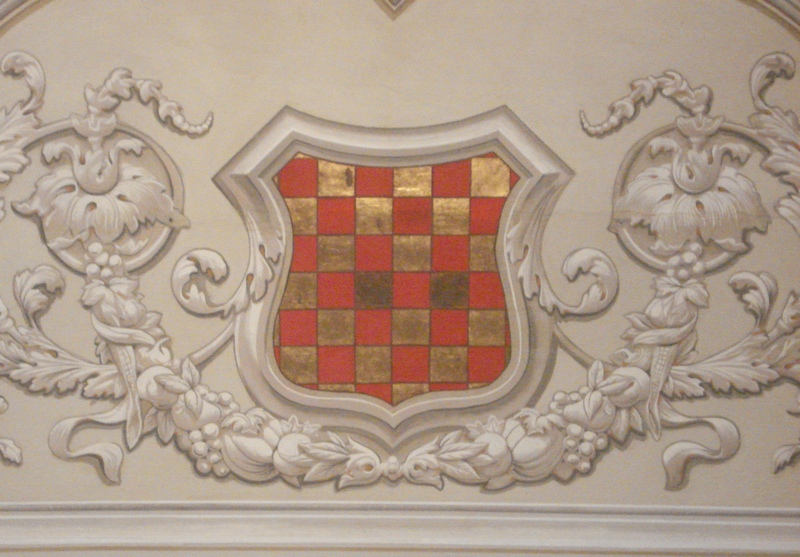
Croatian Coat of Arms in the city of Sombor, the City Hall, 1808, and
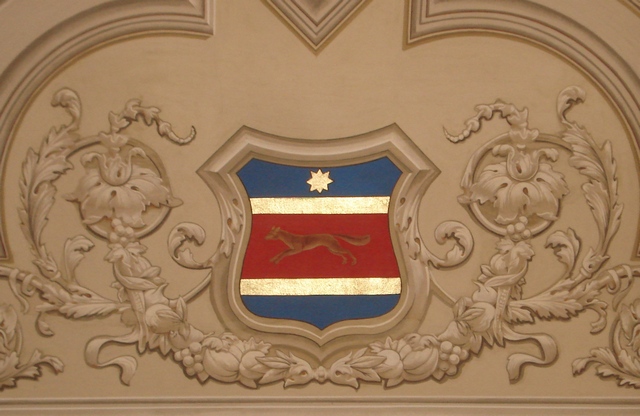
the Coat of Arms of Slavonia, and
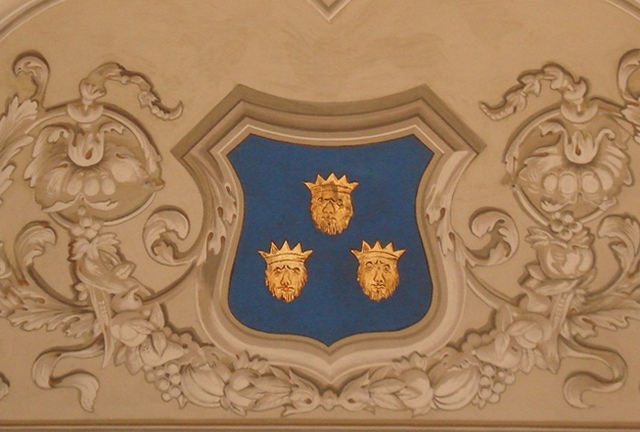
the Coat of Arms of Dalmatia.
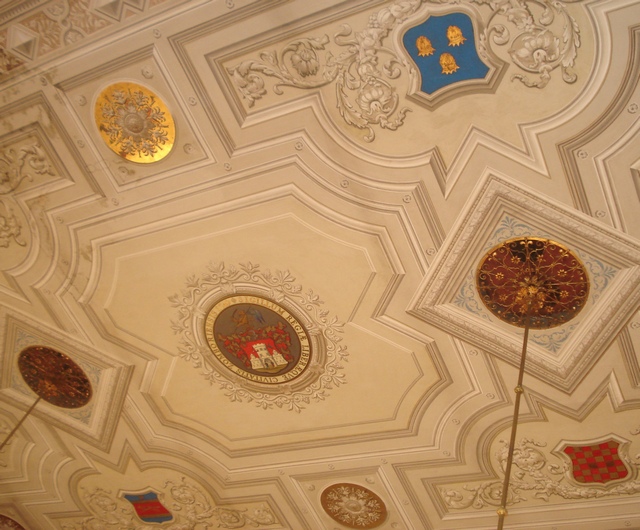
The ceiling of the City Hall of Sombor with the Coat of Arms of the the city of Sombor in the middle,
surrounded with Coats of arms of the United Kingodm of Croatia, Slavonia and Dalmatia
(bottom right, left, and up on the right respectively; missing on the photo, up on the left, Erdely's Coat of Arms)
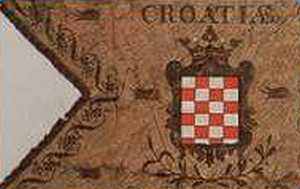
Krunidbena zastava (coronation flag), 1830, source
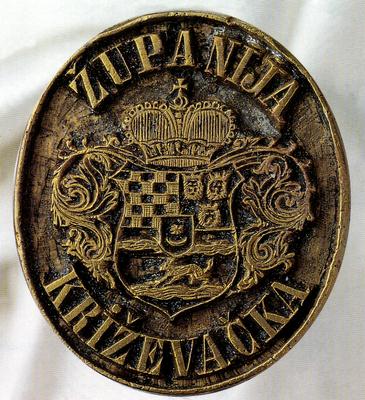
Seal of the Kri¾evci County, 19th century
photo from Croatian History Museum
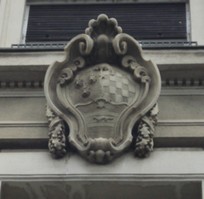
Croatian Coat of Arms above the main entrance to the building of Savska 2, Zagreb, built in 1832
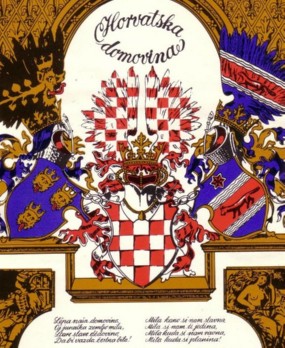
Horvatska domovina (Croatian homeland), 1835., by Antun Mihanovic
Croatian national anthem
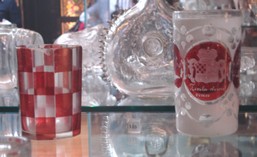
Two glasses with Croatian Coats of Arms made in Osredek, the left one from 1840-1845, and the right one from the middle of the 19th century,
both kept in the Museum of Arts and Crafts (Muzej za umjetnost i obrt), Zagreb
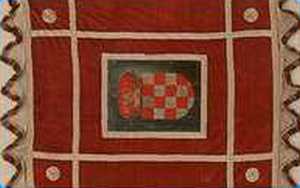
Hrvatski preporod (Croatian Revival) 1842, source
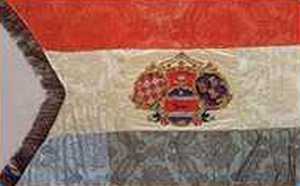
Zastava bana Jelaèiæa (Flag of Governor Jelaèiæ), 1848, source
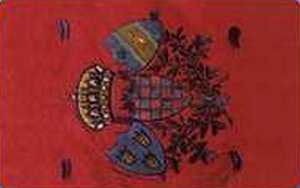
Zastava bana Vla¹iæa (Flag of Governor Vla¹iæ), 19th century, source
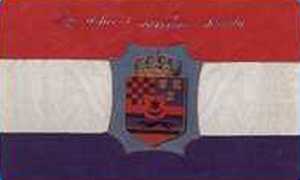
Zagrebaèka narodna garda (Zagreb People's Guard), 1848, source
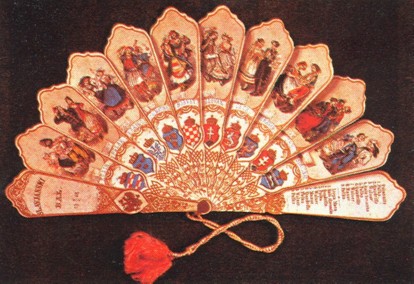
A fan from 1848
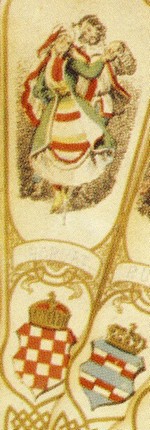
A detail from a similar fan from 1909, Krapina
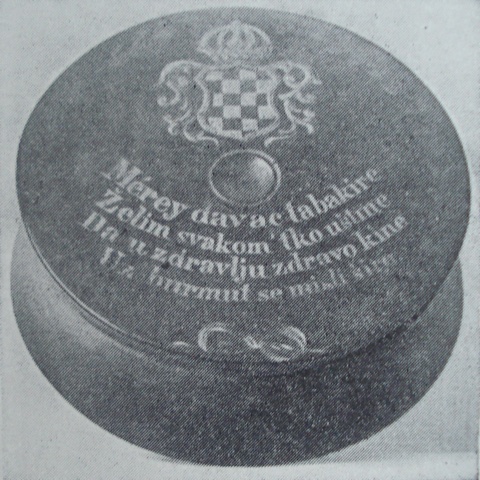
Wooden snuff (drvena burmutica) from the first half of the 19th century, kept in the Museum of Arts and Crafts in Zagreb
photo from Croatian Encyclopaedia, Zagreb 1941
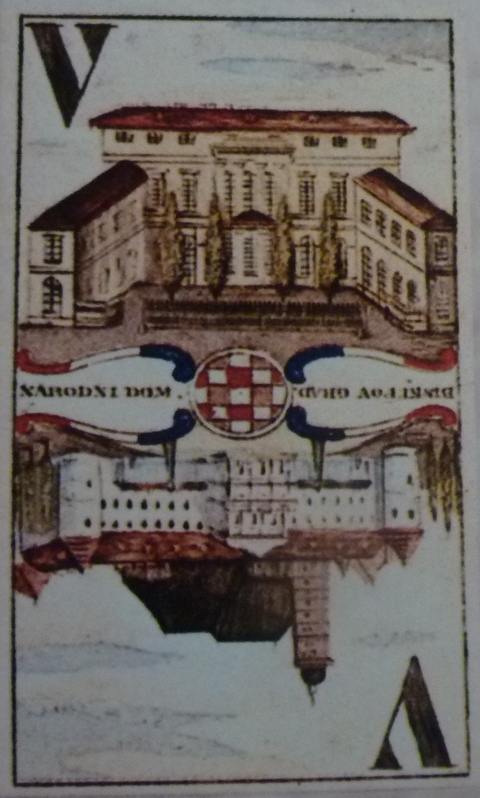
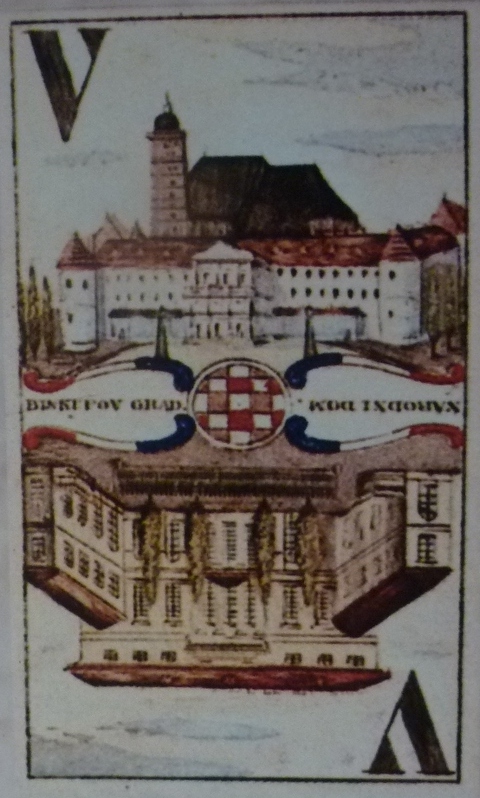
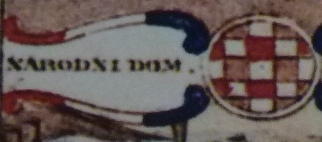
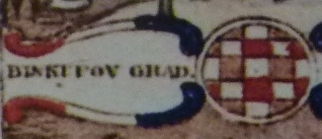
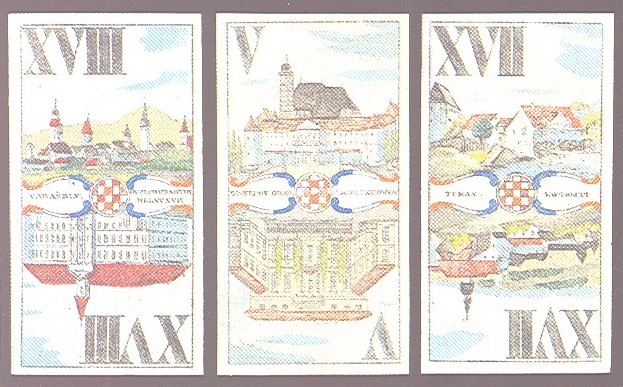
Dvorane zagrebaèke karte (The Halls of Zagreb Playing Cards), 1847/1848.
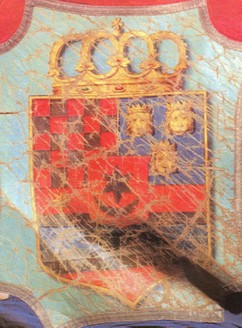
A detail from the flag of the Academic Battalion from 1848,
with inscription that can be seen on enlarged photo: For the Constitution and people's freedom
(in Croatian: Za ustav i narodnu slobodu)
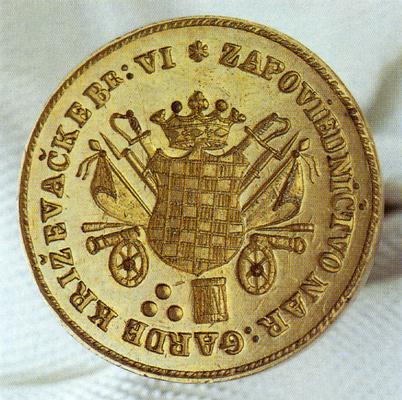
Seal of the Command of the Krizevci Home Guard, 1848/49
photo from Croatian History Museum
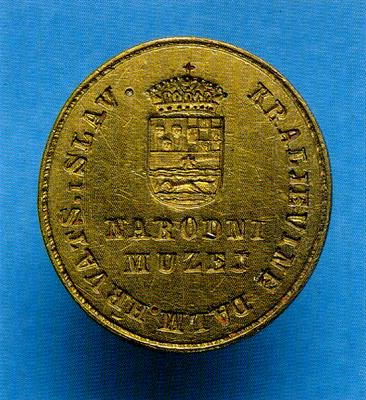
Seal of the National Museum of the Kingdom of Dalmatia, Croatia and Slavonia, 1854-1865
photo from Croatian History Museum
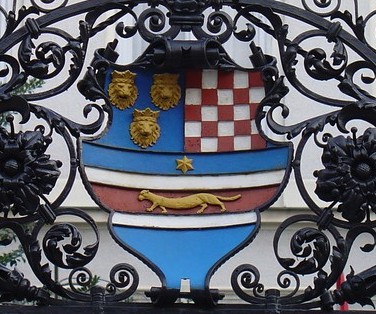
Croatian coat of arms in front of Croatian History Institute, Zagreb
(Coat of Arms of United Kingdom of Dalmatia, Croatia and Slavonia)
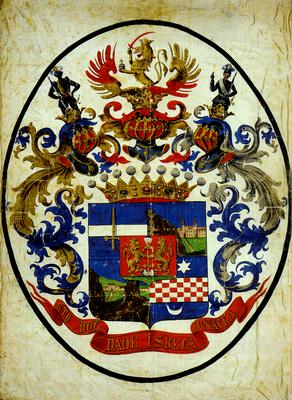
The coat of arms granted to ban Josip Jelacic in 1854.
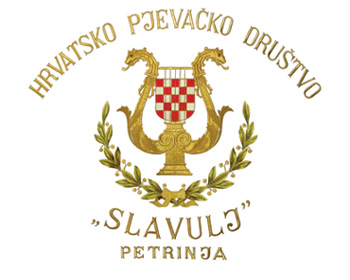
Croatian Singing Club "Slavulj" (Nightingale), 1864
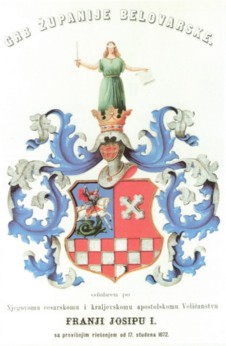
Coat of arms of the Bjelovar county, 1872
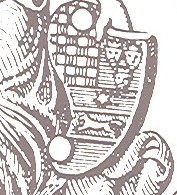
A detail from a memorial plaque of the opening of the modern University of Zagreb, 1874.
(The University of Zagreb exists since 1669)
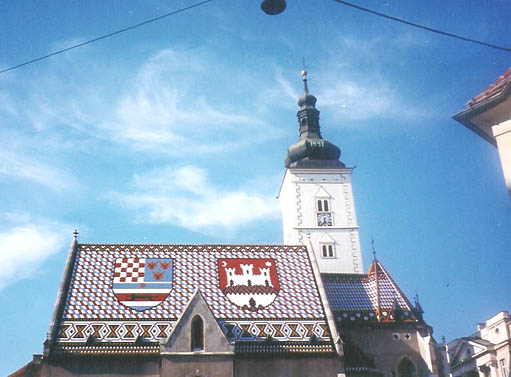
Croatian coat of arms on the roof of the Church of St. Marko in Zagreb, since 1878
(photo by Hippo)
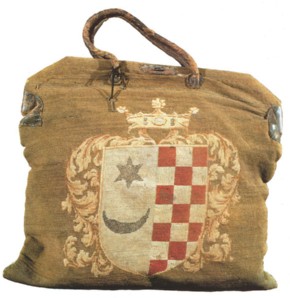
A bag of Ljudevit Gaj (Ludwig von Gay), 19th century
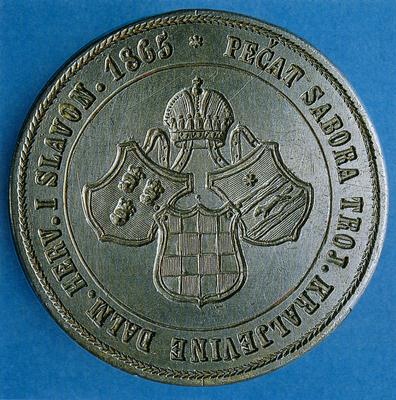
Seal of the Croatian Parliament, Zagreb, 1865
photo from Croatian History Museum
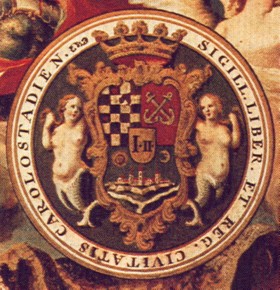
Seal of Karlovac, 1781
from the charter proclaiming Karlovac a free royal city
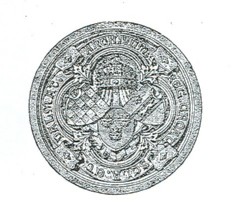
Archivum Reg. Croat. Sla. et Dalmat., founded in 18th century
(Archives of the Kingdom of Croatia, Slavonia and Dalmatia),
today the Croatian State Archives
Croatian Coats of Arms on ships, mostly brigs,
of the Rijeka bay in the 19th century
The brig is a two-masted sailing ship where both masts are square rigged. The rear mast carries a gaff sail as well, see definitions of various shiptypes here.
I express my sincere gratitude to Mr Darko Dekovic, Rijeka,
for permission to use photos from a wonderful monograph [Barbalic, Marendic].
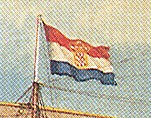
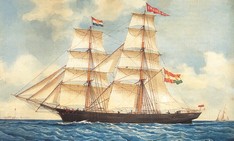
Croatian coat of arms (on threecolor flag) on the front mast of the Enrica brig built in 1868 in Rijeka, 40 m long
Captian Paskval Stipanovic, travelled to New York, Belfast, Queenstown, Cardiff, Montreal, Gibraltar
Painted by a French painter Antoine Roux, junior, 1892 (photo from [Barbalic, Marendic, p. 16])

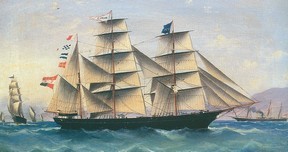
Croatian coat of arms in blue color on the barg Mimi P(ajkuric), built in Rijeka in 1866
(photo from [Barbalic, Marendic, p. 56])
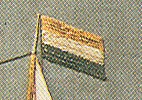
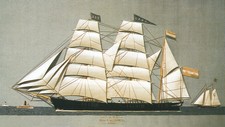
Croatian threecolor on barg Lada, built in Rijeka in 1871
(photo of the silk model from [Barbalic, Marendic, p. 62])

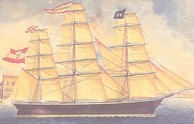
Croatian coat of arms on nave Marietta W(allner) (born Bakarcic), built in Rijeka in 1863
(photo from [Barbalic, Marendic, p. 73])
Two Croatian coats of arms on the Kostrena steamer
(photo from [Barbalic, Marendic, p. 77]):
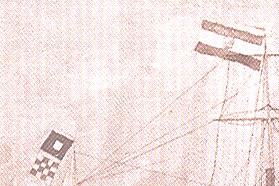
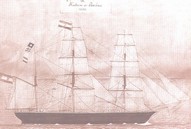
Pepe Medanic, captain of a steamer Kostrena, saved a French steamer Gaulois in Biskay bay in very difficult conditions. The French president conferred a medal. Maritime press reported on this saving throughout the world.
See the original facsimile published in [Barbalic, Marendic, p. 77]:
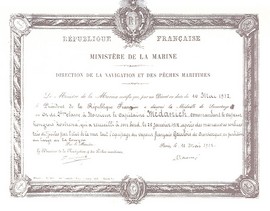
| RÉPUBLIQUE FRANÇAISE MINISTÈRE DE LA MARINE DIRECTION DE LA NAVIGAITON ET DES PÊCHES MARITIMES Le Ministre de la Marine certifie que, par Décret en date du 10 mai 1912, le Président de la République Française a décerné la Médaille de Sauvetage en or de 2ême classe à Monsieur le capitaine Medanovich commandant le vapeur hongrois (!) "Kostrena", qui a recueilli à son bord, le 25 janvier 1912, aprés de maneuvres rendues trés difficiles
par l'état de la mer, tout l'equipage du vapeur français "Gaulois" de Bunhergue (?), en perdition au [?large ac tl Corogne?] Par Directeur de la Navitation et les Pêches Maritimes [signature] Paris, le 10 Mai 1912 [signature] |

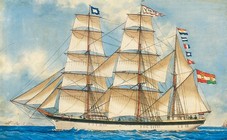
Barg Vinka with Croatian threecolor and a sketch of Croatian coat of arms,
built in Sunderland in Great Britain in 1865, since 1879 in Croatia, in Kostrena.
Its first captain was Ivan Randic Kuzmin, known as captain Jovanin, longstanding pilot at Suez
and a member of the French Astronomical Society (photo from [Barbalic, Marendic, p. 78])

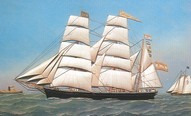
Barg Hrvat (The Croat), built in 1875 in Bakar
(photo of the silk work from [Barbalic, Marendic, p. 105])

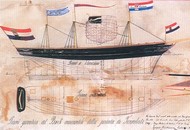
Plan of the barg Grad Karlovac (The City of Karlovac, in Croatia), built in Kraljevica in 1868
(photo from [Barbalic, Marendic, p. 117])

Unknown boat with Croatian coat of arms in the middle of the mast
(photo from [Barbalic, Marendic, p. 123])

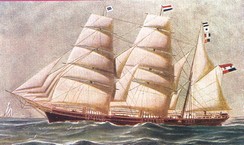
Barg Tri sina (Three Sons - of Vjenceslav Turkovic, a Croatian patriot and Maecenas),
52 m long, built in Kraljevica in 1875, with Croatian threecolor on the main mast
(photo from [Barbalic, Marendic, p. 124])
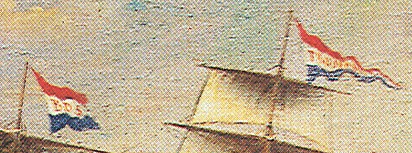
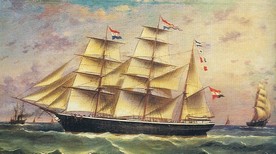
Barg Trojednica (Threeune, i.e. United Kingdom of Croatia, Dalmatia and Slavonia)
BDS (Brodarsko Drustvo Senj - The Senj Shipping Society).
On the main mast there is the Croatian threecolor flag with the name of the barg - Trojednica.
Painted by Ivancovich (photo from [Barbalic, Marendic, p. 126]).

Barg Hervatska (Croatia), built in Senj in 1874
(photo from [Barbalic, Marendic, p. 132])
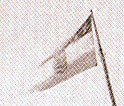
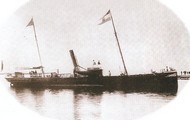
Steamer Hrvat (Croat) built in Recice near Rijeka in 1872,
with Croatian flag on the main mast(photo from [Barbalic, Marendic, p. 143])

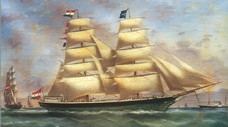
Brigantin Ida P(ersic), built in Rijeka in 1869 (the name was initally Secunda)
(photo from [Barbalic, Marendic, p. 164])
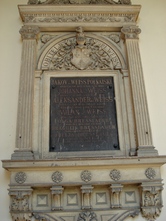

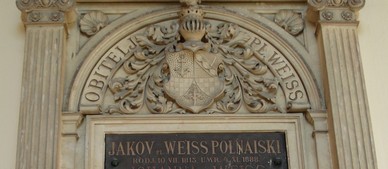
Croatian coat of arms from in the heraldry of the noble Jewish family of Weiss (19th century)
in the arcade of the Zagreb cemetary
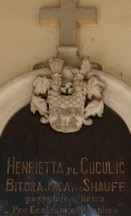

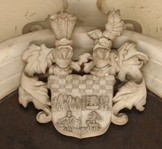
Croatian coat of arms in the heraldry of the noble family of Cucolic (19th century)
in the arcade of the Zagreb cemetary
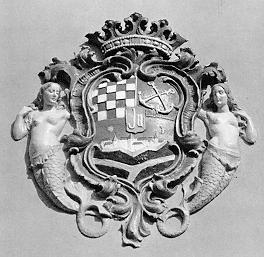
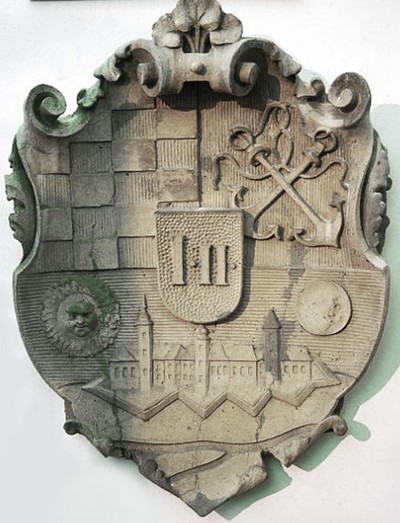
Coats of arms of the town of Karlovac, 19th century
Historical zupanija coats of arms in Croatia containing red and silver squares:
Bjelovar 1872, Krizevci 1759, Rijeka 1864, Severin 1772, Zagreb 1759
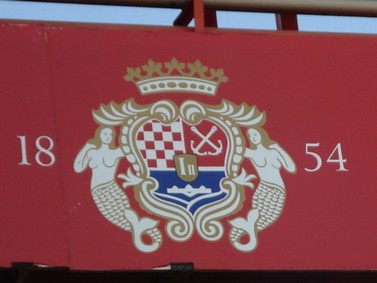
The Karlovac beer, 1854 (Karlovacko pivo)
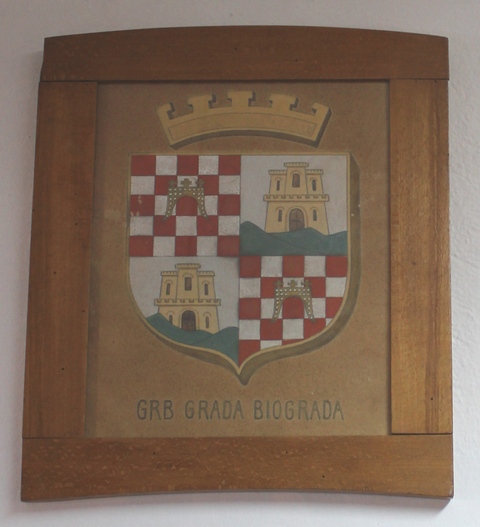
Coat of Arms of the city of Biograd, 19th century, kept in the City Museum of Biograd.

A part of the Coat of Arms of the Jelacic family, 1860, source [Molnar]
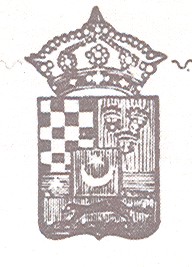
Proclamation of the Deit (Sabor) of the United Kingdom of Croatia, Dalmatia and Slavonia
from 1847 about introducing Croatian language as official language of the Deit insted of Latin.
Croatia was the last country in Europe which abandoned
official usage of Latin language in the Deit!
Here you can see the Coat of arms of the United Kingdom of Croatia, Dalmatia and Slavonia.
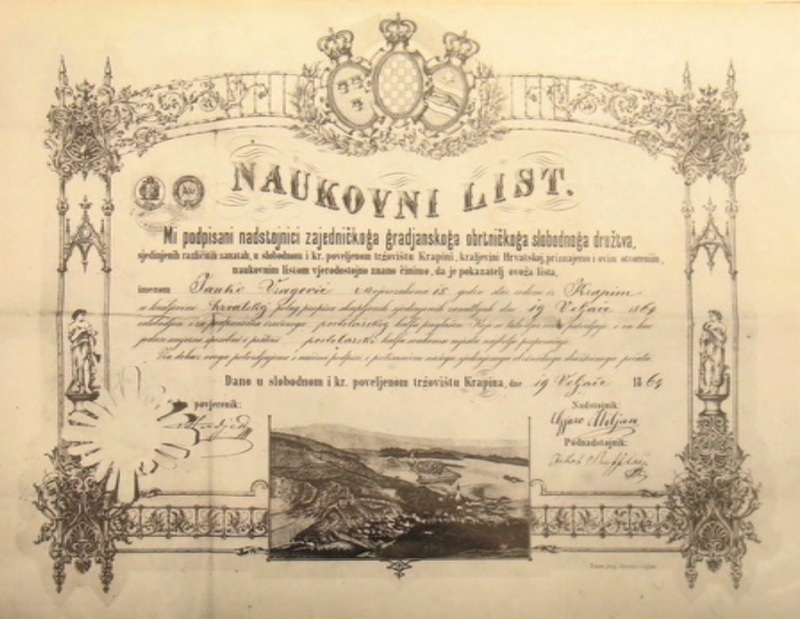
Naukovni list (certificate) from the town of Krapina, 1864., with the Coat of Arms of United Kingdom of Croatia, Slavonia and Dalmatia
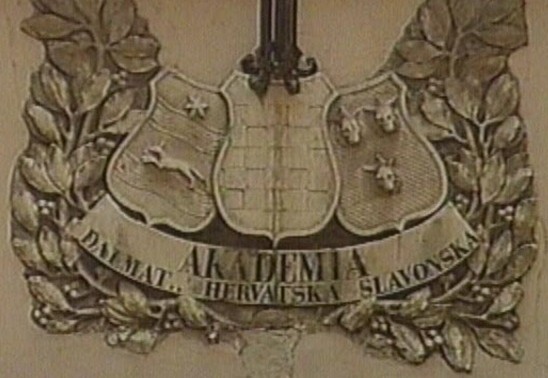
Akademia Dalmatinska, Hervatska, Slavonska in Zagreb, 1669.
Croatian Coat of Arms above the main entrance of the former
Jesuit gymnasium in Zagreb, founded in 1607 (today Gornjogradska gimnazija in the Upper Town of Zagreb) .
Leopold I., the Emperor of the Holy Roman Empire, issued a Diploma in 1669, by which the status and privileges of a university were accorded to the Jesuit Academy in the Royal Free City of Zagreb. This represents the beginning of the University of Zagreb.
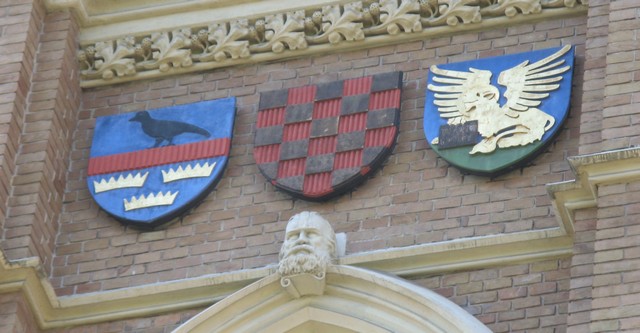
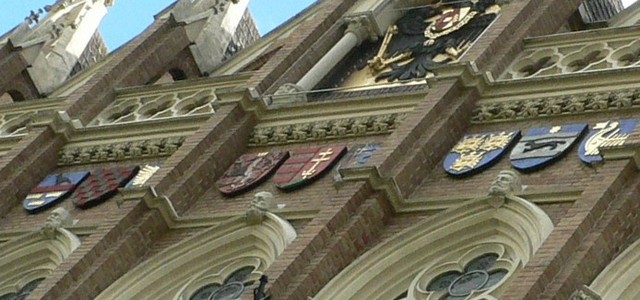
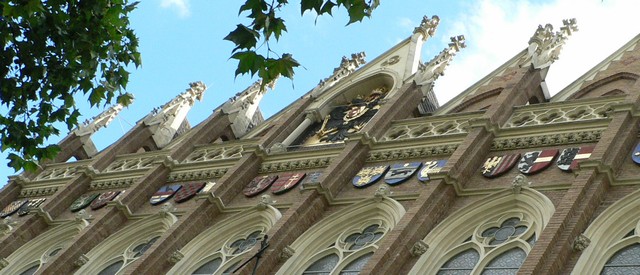
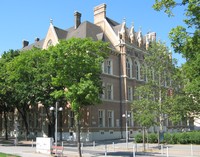
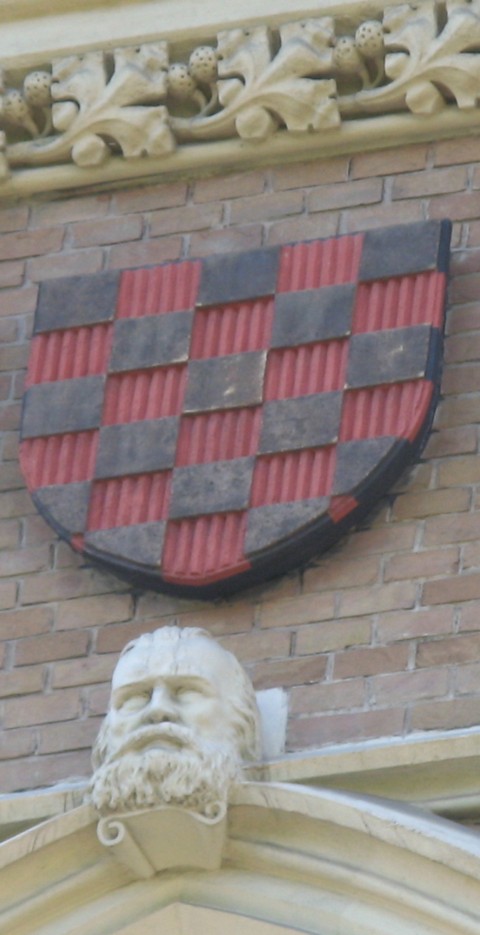
Croatian Coat of Arms in Vienna, captial of Austria, Akademisches Gymnasium (1863-1866),
Beethovenplatz 1. The Gymnasium was founded in 1553, but in 1866 it moved to the new building. The Coats of Arms are from the middle of the 19th century. The gymnasium was attended by distinguished people, like Erwin Scrhödinger, a famous physicist and Nobel Prizer winner. By the courtesy of Mr. Kristian Dumancic, Vienna.
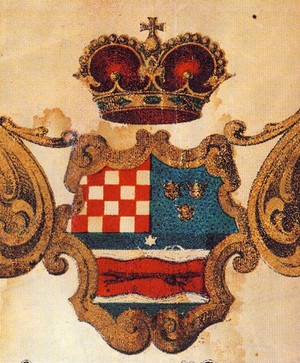
Croatian Coat of Arms on a diploma issued to a honorary citizen of the town of Krapina near Zagreb, 1864
(Coat of Arms of the United Kingdom of Croatia, Dalmatia and Slavonia)
Please, go to the next page below.